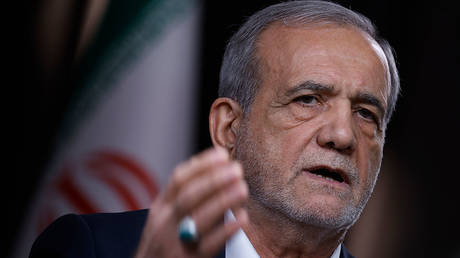

Have you ever felt overwhelmed by the variety of lead generation options available? There is no one-size-fits-all solution. Some services may provide your business with a comprehensive contact list, while others promise meetings with prospective customers. This can make it challenging to choose the right plan for your needs.
For B2B firms, knowing what’s included decides whether sales teams get qualified opportunities or waste weeks chasing dead ends.
Did you know demand generation is not the same as lead generation? It pays to know the difference, so when you research and measure lead gen packages, you know what to expect from them.
This article breaks down the main types of lead gen packages for B2B, explains what you’re buying, and shows how to compare them effectively.
Why Lead Generation Packages Differ
Two providers may charge the same monthly fee yet deliver very different results. Key variables for lead-gen packages include data quality, the channels used for outreach, prospect qualification, and reporting.
Data quality is often measured by the number of scraped lists or researched ICP contacts. Channels can be email-only, or lead-gen agencies can use multi-channel outreach (LinkedIn, calls, nurturing).
Qualification depends on working with just raw names or with qualified, pre-screened prospects. Reporting may also differ from simple spreadsheets to interactive dashboards. All these elements define the total price amount for the outreach campaigns. The factors can push outreach costs from $3K to $20K+, or even more cosmic sums.
The Main Types of Lead Generation Packages
Lead gen packages are typically divided into price categories based on the services provided. Normally, lead-gen companies offer basic and advanced packages.
Starter Packages
Starter packages suit small B2B teams beginning outreach. Their typical features are basic prospecting, email-only campaigns, but minimal personalization, and pretty much limited reporting.
The benefits include fast launch, low cost, and the cons include inconsistent quality, which leaves sales teams to qualify prospects.
Growth Packages
Growth packages fit mid-market companies scaling outreach. They include multi-channel campaigns (email, LinkedIn, calls), message testing and optimization, scheduled reporting, feedback calls, etc.
Pros are balanced cost-to-quality and scalable as sales grow. Cons is the need for strong sales alignment — if meetings miss ICP, value drops.
Enterprise Packages
Enterprise packages target larger B2B firms chasing high-value accounts, such as Fortune 500 companies or industry leaders. Among their main features are deep research, layered ICP targeting, outreach scripts, LinkedIn content, nurture flows, advanced reporting with conversion tracking, and a dedicated account manager.
The advantages are highest-quality opportunities, aligned with revenue goals. The disadvantages include a high price and a slower setup before seeing results.
B2B Lead Generation Service Packages
When comparing lead generation packages, focus on Return on Investment (ROI) metrics, not headline price.
Packages without defined goals (KPIs) are risky. Low-cost packages may look good, but waste sales hours if leads are weak.
For example, when the cost per meeting or SQL is $200, it is cheap if it converts, but costly if it doesn’t. Always consider whether you can scale up or down specific outreach campaigns, for example, is it flexible enough for your business?
Additionally, measure the effort required and whether it paid off with better results.
Usually, we can find 4 ground services in every lead gen service pack: research, messaging, execution, and analytics. If a provider can’t show all four, the package is incomplete.
Research services basically include firmographics, tech stack, and intent data.
Messaging is all about outreach scripts and template testing. Execution involves setup, sending, follow-ups, and scheduling.
Analytics measures opens, replies, booked meetings, and SQL tracking.
Choosing the Right Fit For Your Business
Ask yourself 3 basic questions before signing any outreach campaign.
- What is my average deal size?
- How many leads can my sales team handle?
- Do I need fast growth or steady flow?
The right lead-generation packages align costs, capacity, and goals.
Choosing the right lead generation package is a pivotal decision that can pave the way for your company’s growth and success.
Consider factors such as the lead gen agency’s expertise and industry experience, the techniques included in the pack, the quality of leads and promised conversions, data security and compliance options, client support, pricing, and potential ROI.
Making the right choice can lead to a full pipeline, a productive team, and an efficient budget.
Before jumping into a costly “Growth” or “Enterprise package”, check your internal alignment and ask yourself the following questions:
- Are my Sales fully aligned with Marketing on the Ideal Customer Profile (ICP)?
- Do we have dedicated BDRs or SDRs ready to handle the increased volume of qualified meetings?
High-end ABM packages demand a synchronized team effort; otherwise, you’re paying a premium for internal friction.
Common Mistakes When Choosing Lead Gen Solutions
Typical mistakes during choosing a lead generation agency include the following:
- Chasing cheap offers = low-value leads
- Ignoring alignment = mismatch with deal size, cycle
- Skipping pilots = risks wasted budgets
- No KPIs = can not measure ROI
To negotiate better terms for your side, ask for minimum guarantees (meetings/month), request sample reports before signing, clarify data ownership, start small, and scale if ROI proves out.
Don’t underestimate the cost of delayed follow-up once a meeting is booked.
A high-value opportunity that sits in your CRM for even 48 hours quickly loses its heat. Your sales team must be ready to engage instantly.
The best lead gen package becomes useless if your internal processes drop the ball on a hot lead!
Making The Lead Gen Solutions Work
Lead generation packages are not ‘set and forget.’ To ensure ROI, it’s essential to review your outreach agency’s weekly reports, confirm that meetings align with your ICP, and align your sales and outsourcing marketing teams.
By taking a responsible, proactive approach, you can ensure your lead generation package delivers the expected results.
Agencies that work like partners deliver stronger results than those selling contacts.
Calculating ROI
Here’s a simple formula:
ROI = (Average deal size × Conversion rate) – Package cost
Example
There are 20 meetings, and with a 10% conversion rate, 2 deals were closed. With the average deal size at $20,000, the two deals may be worth $40,000. Therefore, twenty meetings may generate $40K.
To complete the ROI calculation, the equation above must include the investment cost. Let’s say the lead gen package cost was $12,000. The net gain from the two deals would be $28,000. $40K – $12K = $28K.
ROI is positive. The formula makes it easier to compare packages beyond surface pricing.
Summing Up
To sum up, the right lead gen proposals aren’t about who offers the most names, but who delivers opportunities your sales team can close.
Lead generation solutions differ, so it is vital to do your research and testing.
Choose providers that define clear KPIs, provide transparent reporting, and align packages with your goals and deal sizes.
Done right, B2B lead generation service packages can keep your pipeline full, your team productive, and your budget efficient.










